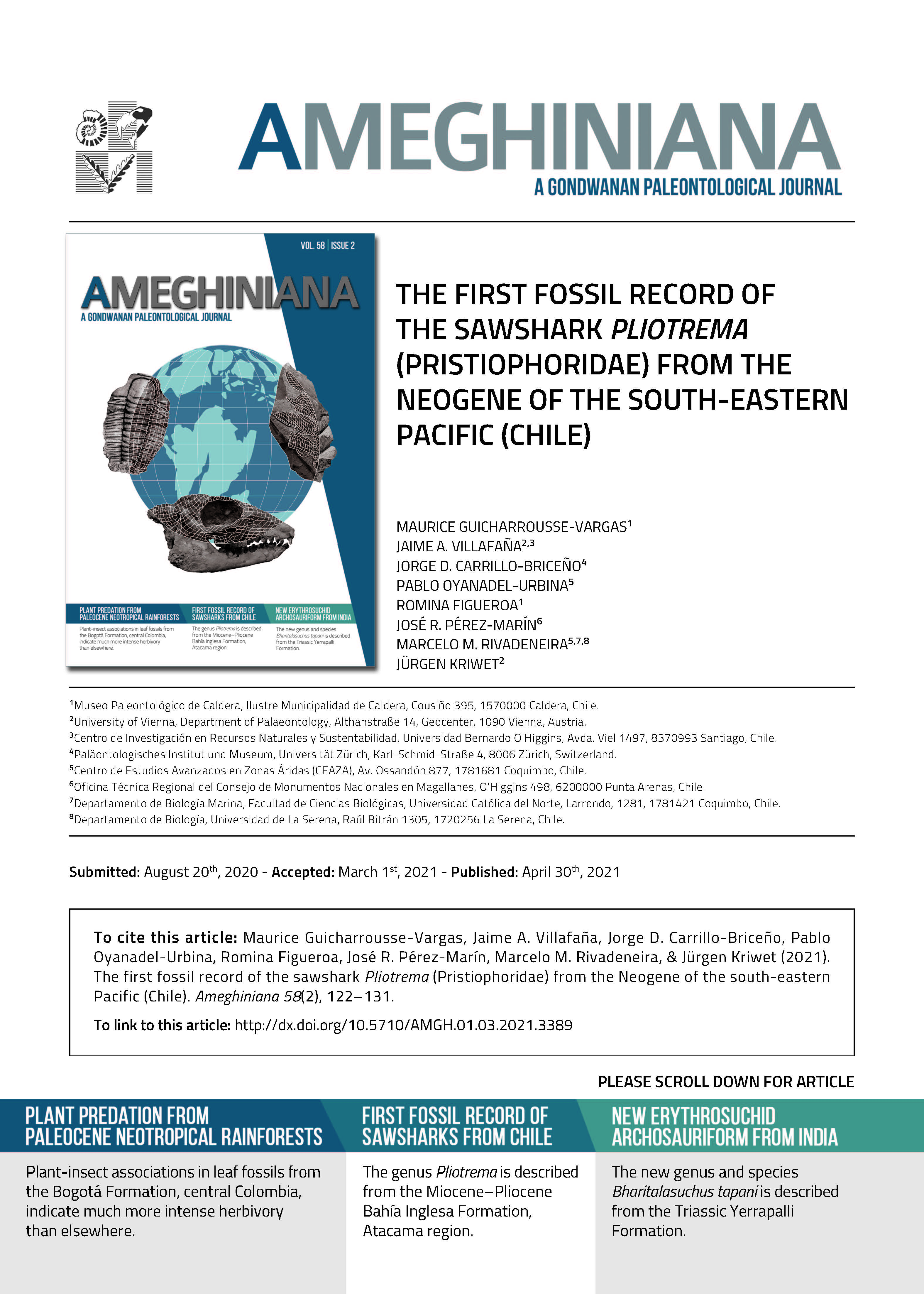A NEW ERYTHROSUCHID ARCHOSAURIFORM FROM THE MIDDLE TRIASSIC YERRAPALLI FORMATION OF SOUTH-CENTRAL INDIA
DOI:
https://doi.org/10.5710/AMGH.18.01.2021.3416Keywords:
Archosauriformes, Erythrosuchidae, Phylogeny, Biostratigraphy, Pranhita-Godavari BasinAbstract
Erythrosuchid archosauriforms are quadrupedal carnivorous reptiles with a proportionally huge skull. They represent one of the first evolutionary radiations of medium to large predatory diapsids after the Permo–Triassic mass extinction. Erythrosuchids are known from Lower–Middle Triassic rocks of South Africa, Russia, and China, and there have been preliminary reports from the Middle Triassic Yerrapalli Formation of south-central India. Here we describe, compare and figure for the first time these Indian erythrosuchid remains. We erect the new genus and species Bharitalasuchus tapani based on a holotype and paratype that preserve tooth-bearing cranial fragments, at least 17 presacral vertebrae, some ribs and probable intercentra, and partial shoulder and pelvic girdles and hindlimb and allow recognizing a series of autapomorphies and unique combination of character states among erythrosuchids. Our phylogenetic analysis recovered Bharitalasuchus tapani most closely related to Shansisuchus shansisuchus and Chalishevia cothurnata from the late Anisian of China and Ladinian of Russia, respectively. The phylogenetic affinities of this new taxon and a revision of the tetrapod assemblage of the Yerrapalli Formation shed light on the age of this unit. The presence of the Wadiasaurus-Rechnisaurus-Bharitalasuchus association in the Yerrapalli Formation closely resembles the Sinokannemeyeria-Shansisuchus dicynodont-erythrosuchid association of late Anisian to early Ladinian Chinese units. This evidence supports a post-early–middle Anisian age, even possibly early Ladinian, for the Yerrapalli Formation. The presence of possibly one of the last erythrosuchids in India would indicate that the clade still retained both a northern and southern Pangean distribution before its extinction.

Downloads
Additional Files
Published
Issue
Section
License
Authors publishing in Ameghiniana have the option of making their article freely available online. Authors opting for the Open Access must pay a fee of $300 (US dollars) to cover article-processing costs and to ensure the article is made open access. Please contact the Production Team after the acceptance of your manuscript if you are interested in making your article Open Access. This option implies by default a license Creative Commons Attribution Non-Commercial-NoDerivs License (CC BY NC ND). If your funding institution requires a different licensing option please communicate this to the Production Team after the acceptance of your manusctipt.










